Acacia wood is no doubt one of the highest quality woods. It is durable and richly beautiful. The acacia wood is better than so many other types when compared.
The common name for acacia is “wattles”. It comes from 1300 species and is native to Australia. Furthermore, each type of wood provides different features and qualities. Therefore, it is important to learn about various types of woods and their comparisons.
This way you can find the right type that fits best your needs. Acacia is an incredible and stunning piece of wood.
However, there are some other types that may come up at their level. So, without any further due let’s talk about each of its types in detail.
In this Article:
Acacia Wood Comparison
There are a large number of woods throughout the world. They might have several features and benefits but acacia comes on top always. Not only the wood, but the acacia tree also has amazing facts.
Nowadays, people prefer using acacia for numerous reasons. It provides so many benefits and durability while its charm is a cherry on top.
Furthermore, acacia can be used in so many things and even in our daily use products like kitchen wares, flooring, indoor and outdoor furniture, etc. Generally, it is used for making furniture goods with beautiful designs.
On the other hand, there are other options as well that you might want to know about. Let’s see them one by one by comparison.
1. Acacia Wood vs Mango Wood
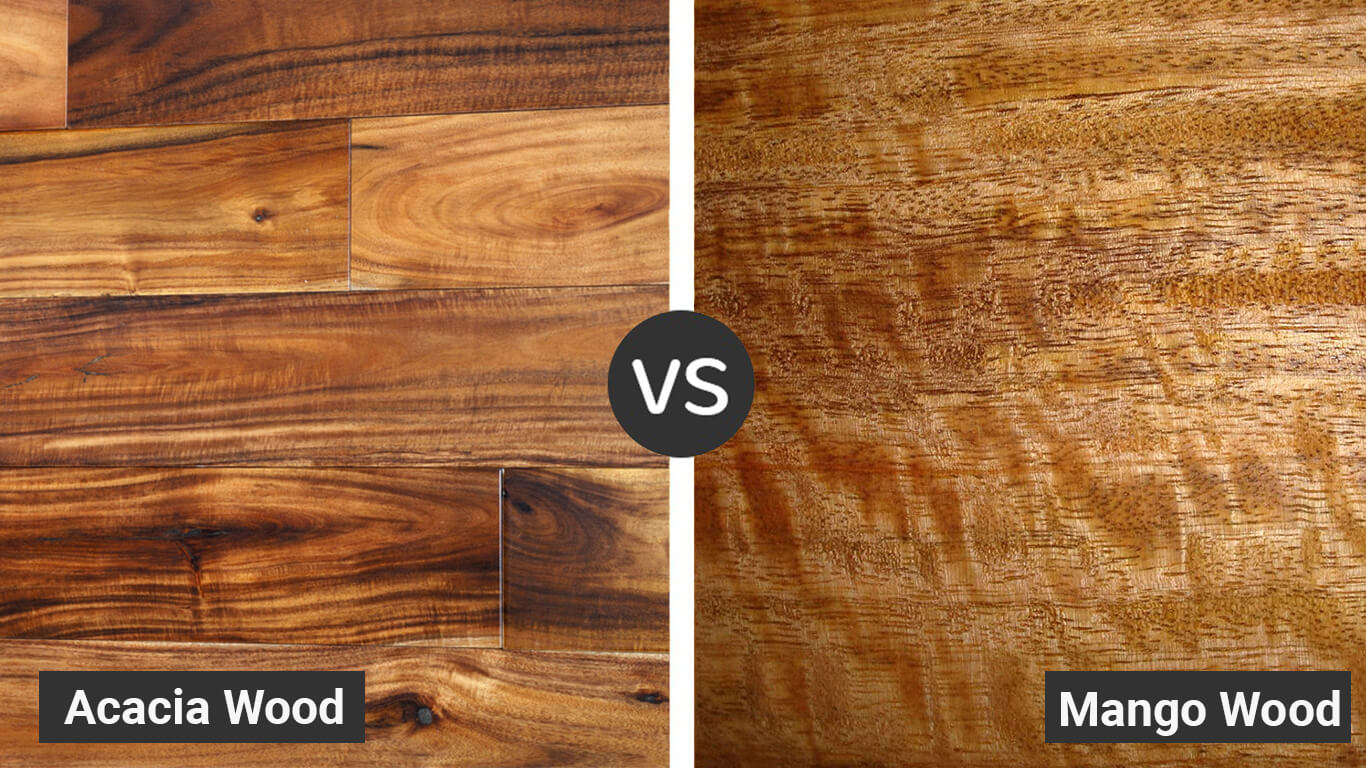
Hardness: Acacia is the hardest wood and ranks the highest on the Janka hardness scale. While the mango wood ranks 1070 on this scale.
Durability: The acacia is harder than oak and has a natural durability feature. The mango is harder than ash or cherry wood but less than the acacia wood.
Resistant: Acacia is highly resistant to water. It does not get any damage when it stays in contact with water. On the other hand, mango wood is also water and moisture-resistant. You can use its furniture outdoors as well.
Price: Acacia has a higher price than all other types of wood. Since acacia is rare in some countries therefore it has a high price value. The mango wood is easily available and has a reasonable price.
Maintenance: The mango wood requires maintenance and polishing regularly. Otherwise, the wood starts damaging and cracking. However, the acacia wood starts shrinking over time if it is not completely dry.
2. Acacia wood vs Walnut Wood

Acacia trees are hardwood and walnut also belong to the same category. It is similar to acacia. Both kinds of wood bear almost the same features.
Acacia and walnut wood both are stunning and are mostly used for producing furniture. However, acacia wood is stronger than walnut wood.
In addition, acacia comes in various colors and grain patterns. In contrast, walnut wood also comes with some rich and deep colors.
The acacia wood is native to Australia and Africa while the walnut wood is native to North America. Moreover, both of the woods are rare to find and hence have a great price value.
Additionally, acacia wood is heavy and weighs 770 g per cubic meter. While the walnut tree wood is very heavy, durable, and ideal for making furniture. It lasts very long.
The Janka score of the walnut wood is 1100. It resists damage and gives long life to your furniture.
In conclusion, both types of wood are long-lasting and stunning. The walnut is mostly in darker colors and in lighter shades too.
Acacia wood is incredible and highly in demand today. Furthermore, it is very good for making furniture. The main reason for its popularity is that it comes with unique grain patterns.
3. Bamboo vs Acacia Wood
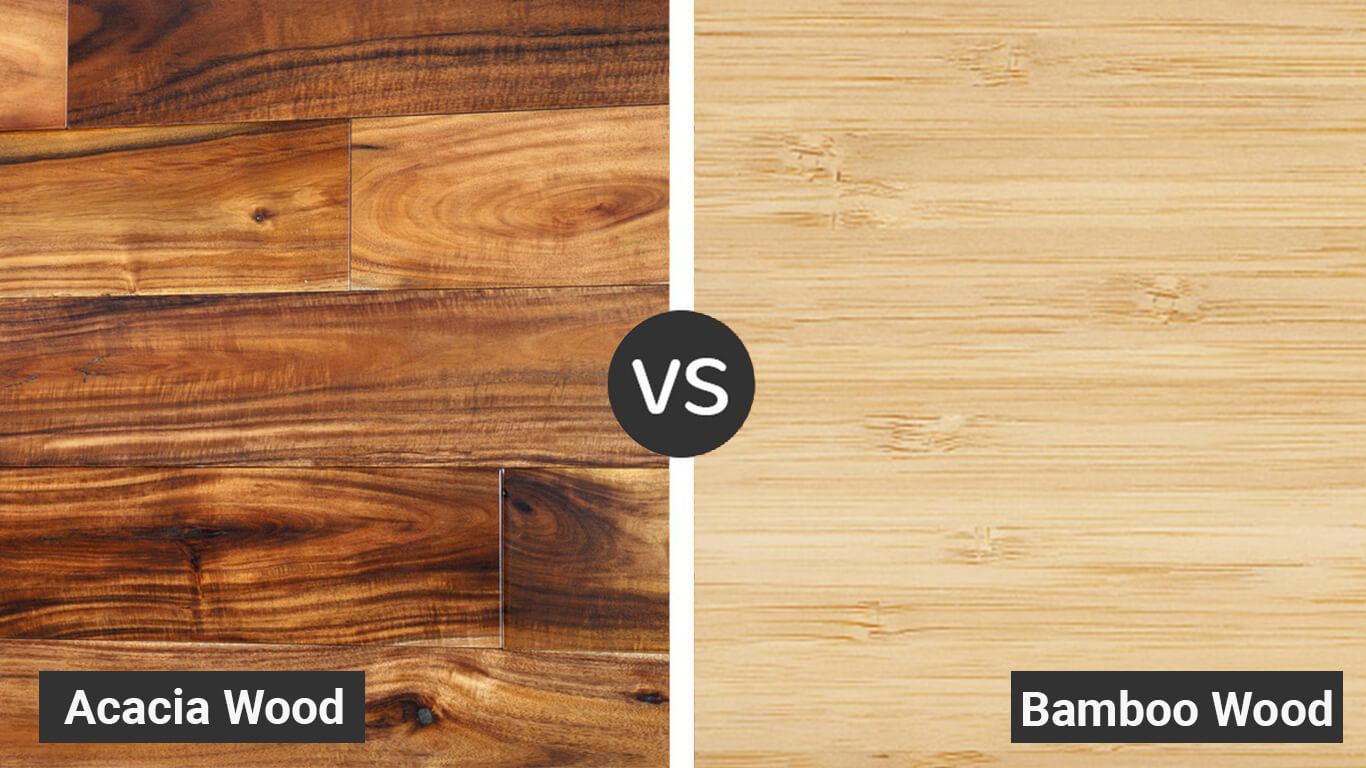
Bamboo is a hardwood that is durable but cheap. While acacia is the best hardwood and much stronger than bamboo. Therefore, it is not a good idea to sacrifice quality and use bamboo wood.
Furthermore, bamboo is flexible and so is acacia. Both belong to hardwood families and are easy to work with.
Bamboo wood plays a significant role in the manufacturing of various building materials. On the other hand, acacia wood is increasingly consumed for making numerous products such as furniture. In other words, bamboo wood is mostly used outdoor while acacia is used indoors.
Moreover, nothing can beat the beauty of acacia as it contains a wide range of colors and grains. However, bamboo wood has lighter shades and is sometimes a bit darker yet elegant.
Acacia is more strong because of its natural oils and resists water very well. In contrast, bamboo wood resists water if it has a good number of layers. It does not have natural oils.
4. Acacia Wood vs Oak Wood
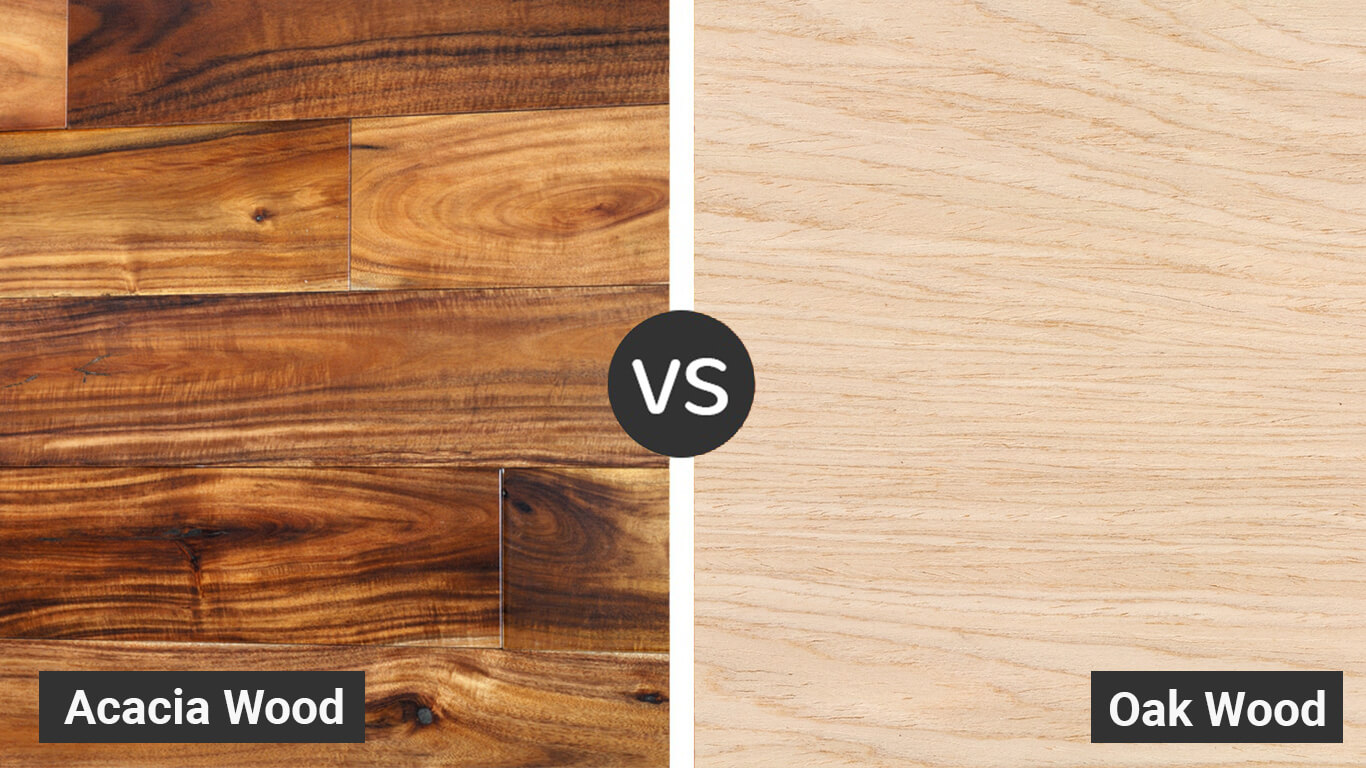
Acacia is not heavy and weighs lighter than oak wood. The oak comes with a nice grain pattern while acacia has also a unique grain pattern but it is very smooth.
It is very difficult to find acacia usually. Oakwood is very useful for the manufacturing of heavy materials.
Furthermore, both types are water-resistant and durable. They have high-quality features that prevent cracking and damage.
Acacia wood is very rare therefore you can not find it easily. On the other hand, when you compare acacia with oak wood, oak is very common and easily available.
Moreover, when it comes to the price acacia wood is always on top. Oakwood is cheaper than acacia.
5. Eucalyptus Wood vs Acacia

Just like acacia wood, eucalyptus wood has also antioxidant properties. It is a very strong wood but less than the acacia.
Acacia is the most durable wood while eucalyptus has more chances of cracking and damaging over time.
Furthermore, acacia wood is very good and it does not crack or damage. However, the eucalyptus wood starts becoming rough as time passes.
Eucalyptus wood is not very resistant to moisture and on the other hand, acacia resists water and moisture.
Moreover, you can use one log of eucalyptus wood for making furniture. Nevertheless, it is a bit tough to find the matching color and pattern of the wood.
6. Cedarwood vs Acacia Wood

Both are hardwood and durable. They have various advantages. The only difference that appears here is that cedarwood is more expensive than acacia.
Acacia and cedarwood are very useful for making furniture and flooring etc. Furthermore, the grain patterns of acacia are in a wide range while the cedar has single and straight patterns.
Unlike acacia, cedarwood does not crack or warp. This wood does not require finishing while acacia needs it.
Moreover, the acacia wood stains well and it also has an oily texture like cedarwood. Both types are water-resistant.
7. Beechwood vs Acacia Wood
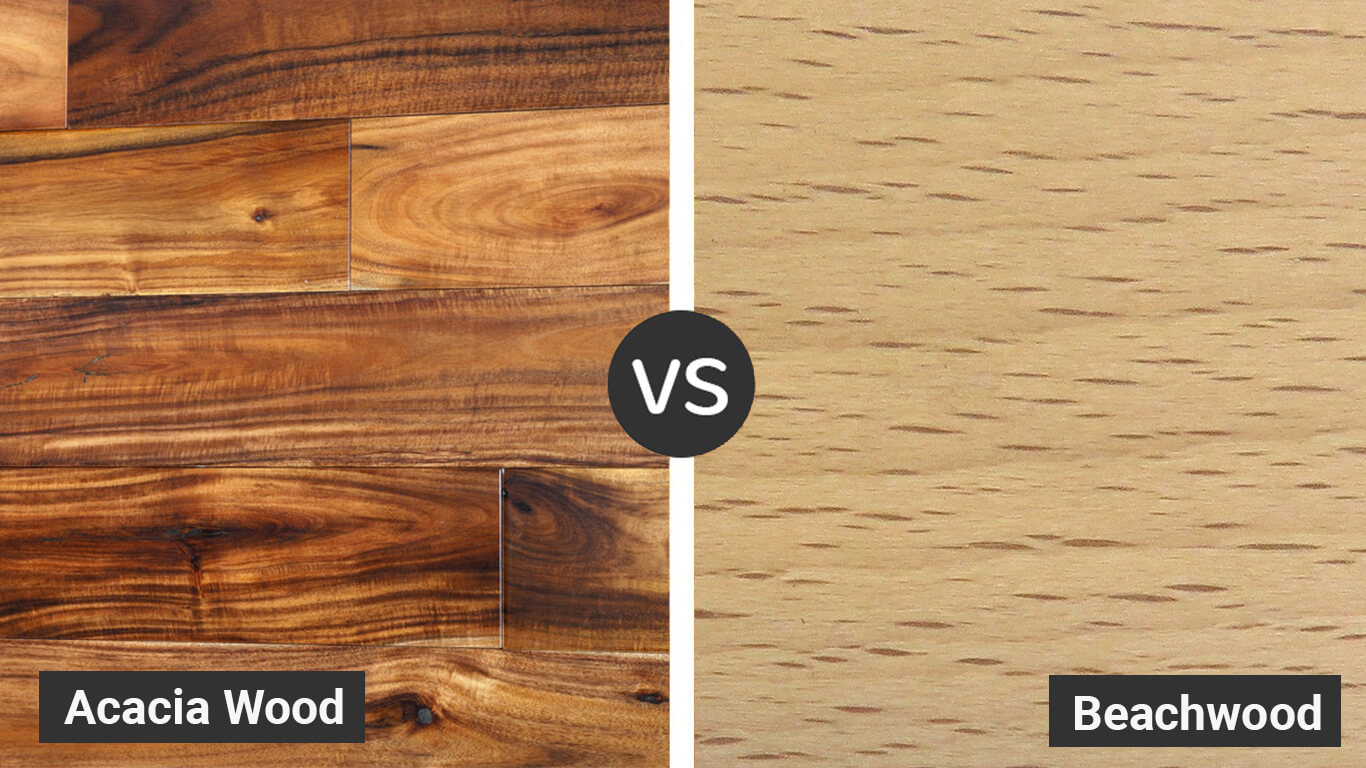
Beechwood is an innovative wood with having light reddish-brown color. It usually has a straight grain pattern. The beechwood is heavy and strong too.
The acacia wood has varying colors and the shade ranges from light brown to darker tones. It has a rich design and colors. Furthermore, both kinds are best for making furniture.
However, beechwood is commonly used to make stools and chairs. While acacia wood is best for outdoor furniture as well. It is very decorative and elegant.
8. Acacia Wood vs Cherry

Acacia is harder than cherry wood. The cherry wood is not even closer to it. The cherry wood is dark brown in color with a slight hint of golden.
The acacia and cherry wood both give an aesthetic feel. The cherry wood is sturdy and lasts long as acacia. It has a finer grain than acacia.
Furthermore, acacia wood is more expensive than many other kinds. While on the other hand, cherry wood is a premium type and less costly than acacia.
9. Acacia Wood vs Hickory
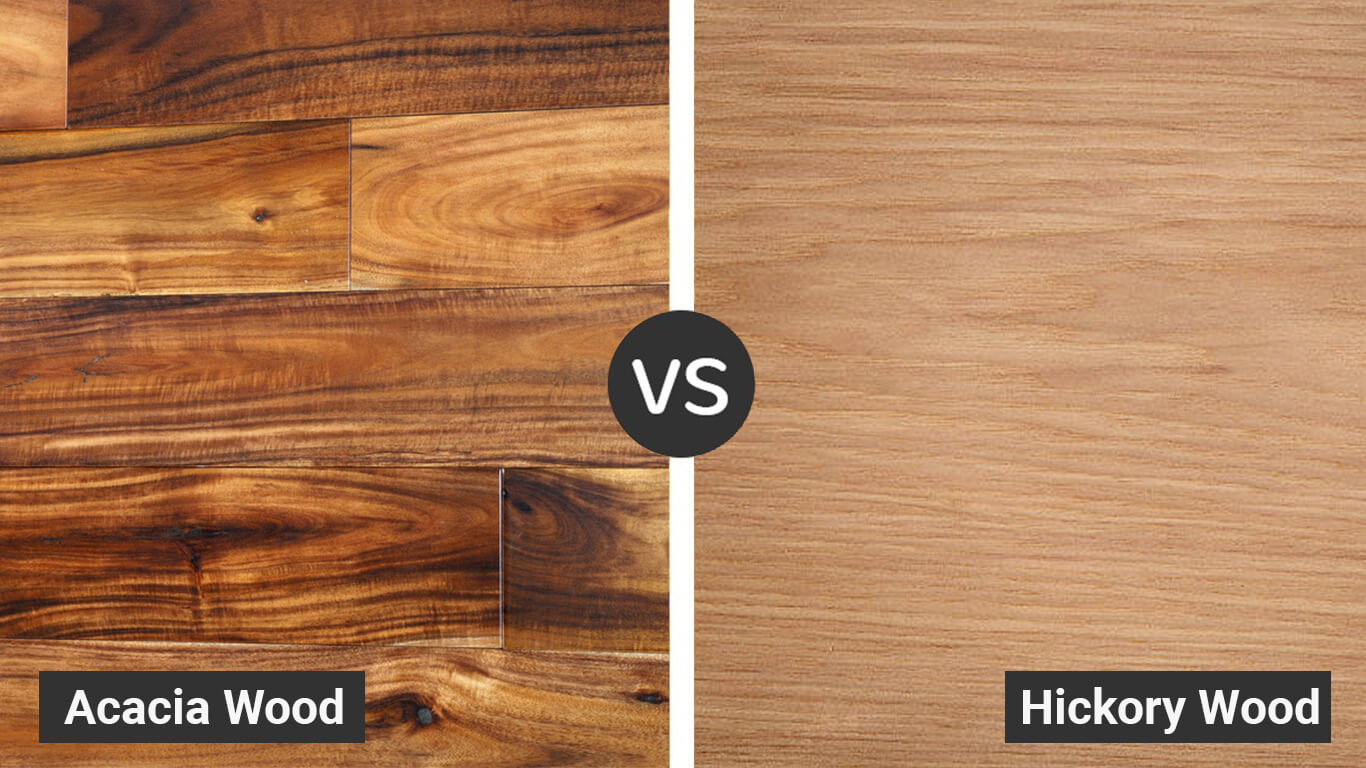
Acacia wood is ultimately hard and resistant and it is 23% harder than hickory. Hickory is another name for the trees that have the genus Carya and it covers 18 species. On other hand, acacia has more than 18,000 species.
The hickory forests have thick trees and they have hardwood and durable. This wood is commonly used to make home decorations including furniture, utensils, and cabinets.
Moreover, hickory wood is widely used on industrial levels for making sports goods, construction of homes, carriage wheels, and ladders. Acacia wood is very common for flooring, furniture, utensils, and home decorations.
10. Sheesham vs Acacia Wood
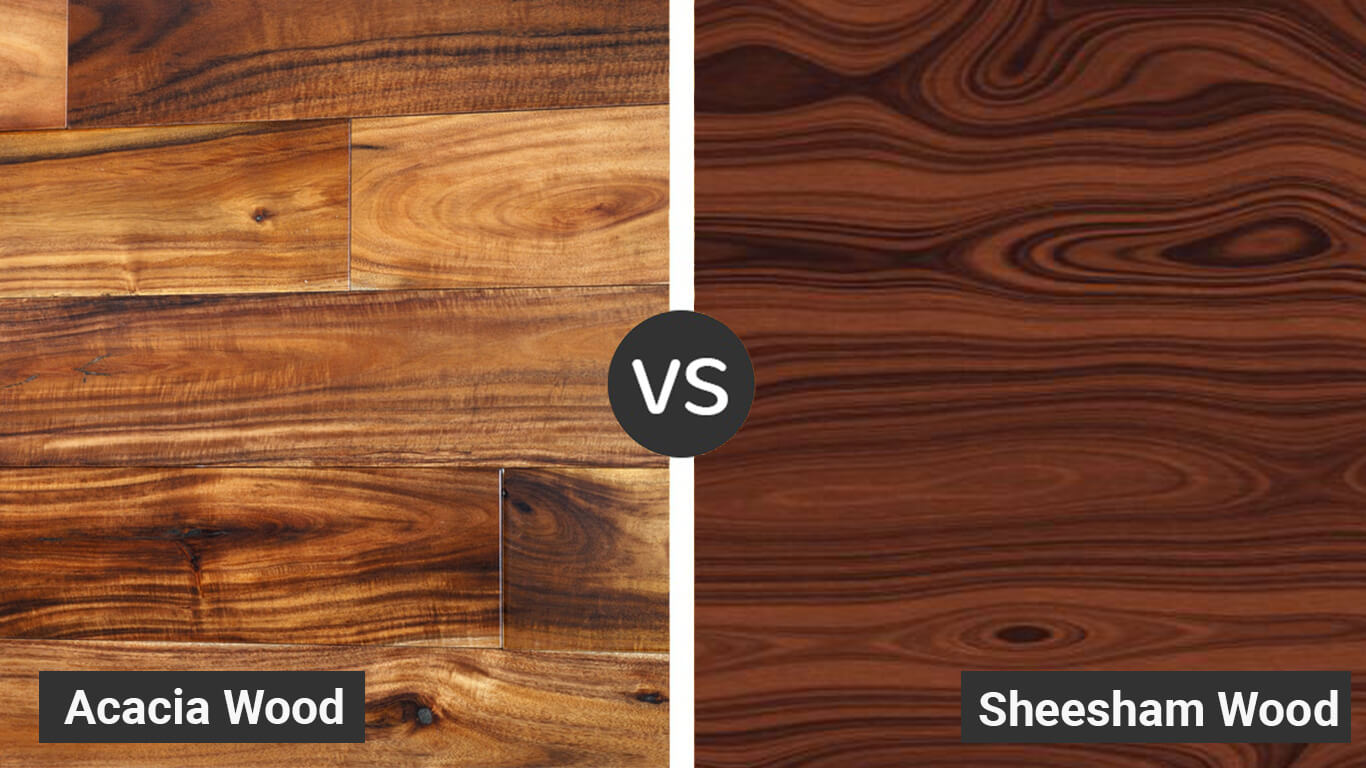
Acacia is a hardwood and it is one of the strongest woods. Apart from that acacia is stable and looks stunning.
Sheesham, on the other hand, is dry wood and it is a very good wood carving material. It lasts long.
Furthermore, these woods are very good for the manufacturing of furniture. However, the furniture can crack or damage if it is coming through a moist environment.
11. Acacia Wood vs Teak Wood
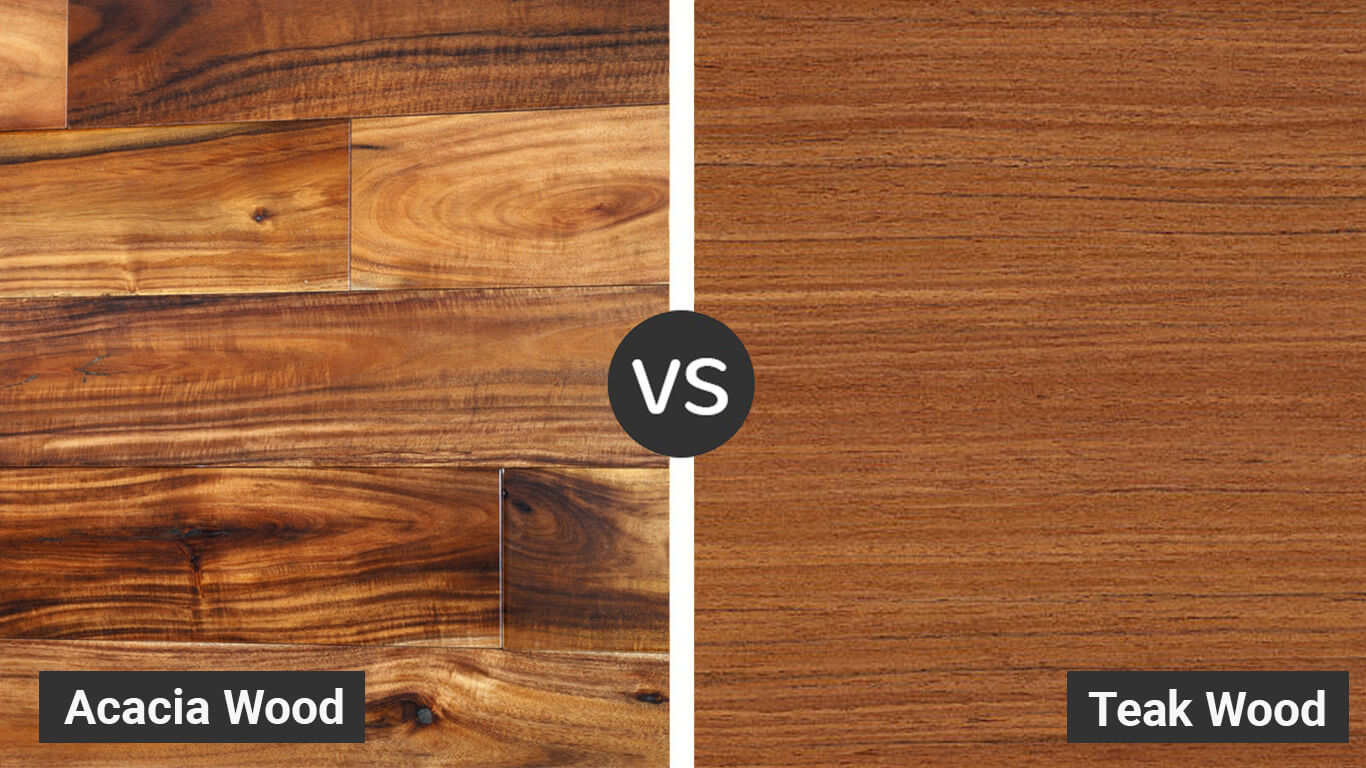
The teak is native to Burma and originates mostly in that region. While acacia is native to Australia and Africa.
The teak wood is beautiful but it is rare. Acacia has an attractive appearance and various grain patterns. Additionally, the patterns of acacia wood are straight or curvy.
On the other hand, teak wood contains subtle and straight grain patterns and lighter colors. The acacia comes in darker tones too.
Moreover, teak wood is pale in color and is more lasting than acacia. However, the acacia furniture is also long-lasting.
The main difference between the finish acacia and teak wood is that the oil level in acacia is lower. While the teak wood has a natural oily finishing hence it does not require finishing like acacia.
12. Olive Wood Vs Acacia Wood

The grain pattern of the olive wood is interlocked or straight while the acacia has a curvy or straight pattern.
Furthermore, olive wood is more expensive than other lumber woods. On the other hand, acacia is long-term but expensive among the other hardwoods.
The olive wood does not need proper maintenance since it is very easy to clean. You can use a simple wet cloth to clean it.
Moreover, the acacia wood requires maintenance from time to time. Both kinds are strong and durable.
13. Maple Vs Acacia Wood

Maple is strong wood and has a fine, straight grain. It is in light reddish-brown color and also comes with deeper colors.
Furthermore, it is native to North America. This wood comes in two categories that are hard maple and soft maple.
If the maple stays in contact with water it may shrink or expand. In contrast, acacia wood is very good in this regard as it resists water.
Both kinds stain very well. Maple wood has a light color, durable, and is beautiful. It is also very good for making furniture just like acacia wood.
Summary
I hope that now you have enough knowledge about the various kinds of woods and their comparison with acacia wood.
This article compares acacia with other woods so you have enough knowledge when choosing wood type for your furniture, flooring, kitchen utensils, or for any other reason. Now, it is up to you how you make your money worth spending.
Do share your thoughts about our acacia wood comparison in the comments section below.
Frequently Asked Questions
Q) Is acacia wood better than Oak?
Answer: Oak is considered the superior wood for furniture. Acacia, on the other hand, makes a lighter and more environmentally friendly alternative to Oak.
Q) Does acacia wood crack?
Answer: The wood does not crack. It is strong, dense, and hard for centuries before turning into a golden brown color.
Q) Is acacia wood waterproof?
Answer: Although acacia is water-resistant, it can get moisture if exposed to water for a longer period.
How can we improve it?
We appreciate your helpul feedback!
Your answer will be used to improve our content. The more feedback you give us, the better our pages can be.

Hi there! It's Kurt Johnson here, a 35 years old wood, trees, and plants enthusiast who has worked as a carpenter, flooring and furniture, beach, and patio decking expert in the last 10 years. Now, I'm here to share my experience with woods through my acacia wood blog. Hope you are learning a lot from my articles.


